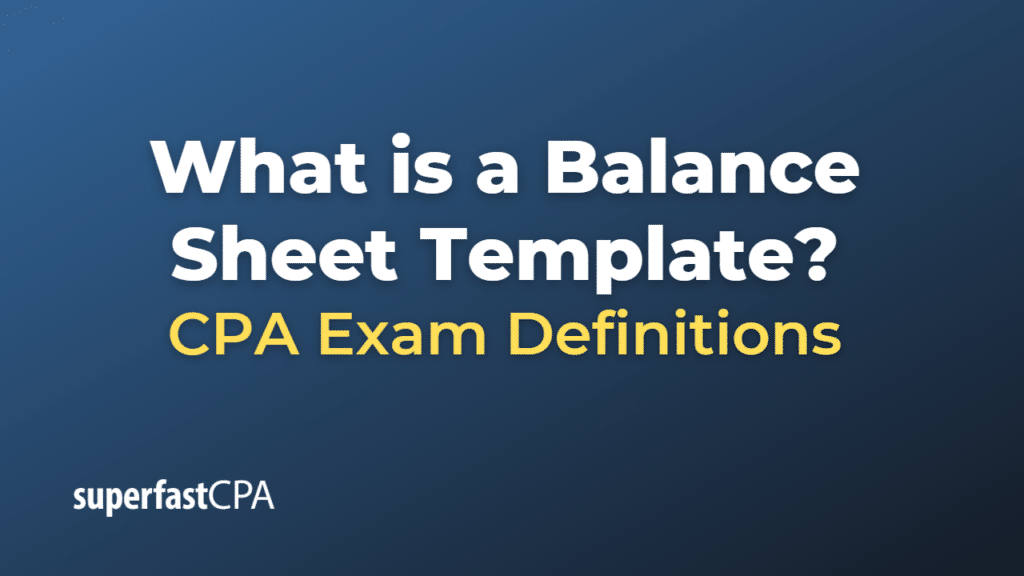Balance Sheet Template
A balance sheet template is a pre-formatted document, often in spreadsheet software like Microsoft Excel or Google Sheets, that provides a standardized structure for presenting a company’s assets, liabilities, and equity at a specific point in time. It helps businesses easily create and maintain their balance sheets by providing a clear layout and organization of the financial data.
A simple balance sheet template typically includes the following sections:
- Assets:
- Current Assets (e.g., cash, accounts receivable, inventory)
- Non-Current Assets (e.g., property, plant, and equipment, intangible assets)
- Liabilities:
- Current Liabilities (e.g., accounts payable, short-term debt)
- Non-Current Liabilities (e.g., long-term debt, deferred tax liabilities)
- Equity:
- Owner’s Equity (e.g., common stock, retained earnings)
Using a balance sheet template helps ensure that the financial data is presented in a consistent and easily understandable format, making it simpler for business owners, investors, and other stakeholders to analyze the company’s financial position.
Example of a Balance Sheet Template
Here’s a simple balance sheet template:
| Category | Subcategory | Amount |
|---|---|---|
| Assets | ||
| Current Assets | ||
| Cash | 10,000 | |
| Accounts Receivable | 8,000 | |
| Inventory | 12,000 | |
| Total Current Assets | 30,000 | |
| Non-Current Assets | ||
| Property, Plant & Equipment | 50,000 | |
| Total Non-Current Assets | 50,000 |
| Total Assets | 80,000 | |
|---|---|---|
| Liabilities | ||
| Current Liabilities | ||
| Accounts Payable | 6,000 | |
| Total Current Liabilities | 6,000 | |
| Non-Current Liabilities | ||
| Long-Term Debt | 10,000 | |
| Total Non-Current Liabilities | 10,000 |
| Total Liabilities | 16,000 | |
|---|---|---|
| Equity | ||
| Common Stock | 40,000 | |
| Retained Earnings | 24,000 |
| Total Equity | 64,000 | |
|---|---|---|
| Total Liabilities and Equity | 80,000 |
This table shows a simple balance sheet with assets, liabilities, and equity sections. Each section is broken down into current and non-current categories. The total assets, total liabilities, and total equity are displayed at the bottom. The sum of total liabilities and total equity should equal the total assets.













